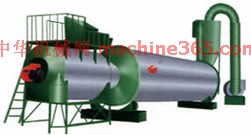1) direct speech


直接引语
1.
On the basis of a pragmatic analysis of changing an indirect request from direct speech into indirect speech,the author thinks that traditional grammatical rules are restricted by some contextual factors,which should be given priority to in the change.
具有间接请求功能的话语,在直接引语转换成间接引语时,语境因素具有制约作用。
2.
This paper tries to expound the merits and the demerits of direct and indirect speeches in the process of information conveyance from senders to receivers,thereby illustrating the role of the free indirect speech in bridging the information gap.
本文通过分析间接引语和直接引语由于各自对话语主题的不同的叙述处理,不能真实地反映说话主体或叙事主体的意识从而造成部分话语信息的丢失,而自由间接引语和直接引语能够真实地反映说话主体和叙事主体的意识,从而实现对话语信息的补差作用。
3.
Based on the research conducted by former scholars, the authoress attempts to describe in detail the direct speech in Chinese classic novel on a basis of Prof.
本文在前人相关研究成果的基础上,以邢福义先生的“小三角”理论为基础,试图对中国古典白话小说中的直接引语进行详细的描述,发现并概括出直接引语模式的发展变化,并解释这种变化的原因。
2) direct object


直接宾语
1.
This paper makes a comparative study of the English and Chinese"structure of indirect object+direct object".
该文比较研究英汉两种语言中的“间接宾语+直接宾语”结构,认为此结构的决定性特征是“转移性领属关系”,并审视汉语中一些被认为是双宾语的结构,发现汉语中存在一种汉语特有的“间接宾语+直接宾语”的双宾语结构。
3) Answers
[英]['ɑ:nsə] [美]['ænsɚ]


答语
1.
Semantic and Pragmatic Classification of Answers and Interrogative Statements in Modern Chinese;
答语与现代汉语疑问句的语义语用分类
2.
They have the same or familiar structure, whereas, the structures of the answers are inconsistent in the two languages.
否定是非问句在汉、英两种语言中都存在,这种称谓相同的问句的答语在句法层面却出现了不一致的情况,而肯定是非问句的答语却是一致的。
3.
This study is aimed at providing a bird\'s-eye-view of communicative functions and relevance nature of general questions and their answers with the Cooperative Principle(CP),the Face Theory and the relevance theory(RT) as the theoretical framework of the study.
通过对语料的分析,该研究归纳出一般疑问句答语的五种语用功能,即:提供信息;解释原因;表达不同意;展示拒绝及表露不合作意愿。
4) direct complaints


直接抱怨语
1.
A Comparative Analysis of Complaint Strategies in Direct Complaints between Chinese and American College Students;
中美大学生直接抱怨语中抱怨策略的对比分析
2.
Complaints can be classified into direct complaints and indirect complaints .


抱怨语可分为直接抱怨语与间接抱怨语。
3.
Based on the detailed analysis of the data obtained from discourse completion tasks,this paper aims to study the direct complaints in Chinese,especially on complaining strategies,realizations,level of speech act,distribution and typical linguistic expressions of complaining strategies in each situation.
文章通过话语补全测试(DCT)的方法收集语料,探讨汉语直接抱怨语的抱怨策略、表达方法、言语行为层面,以及各情景的抱怨策略分布及其典型语言表达。
5) free direct speech


自由直接引语
1.
This essay intends to reveal the distinctiveness of Dubin s Lives in the narrative technique by analyzing the employment of the third person inner focalization,free direct speech,swift transition in Dubin s Lives.
本文从双重视角、自由直接引语、快速切换三个方面分析了马拉默德独巨匠心的叙事艺术,以期给读者提供一个欣赏该部小说的全新视角。
2.
This paper intends to analyze narrative strategies including the paralleled structure,multiple points of view and free direct speech to highlight the characterization and the theme of the novel.
通过细致分析《中年》的平行结构、多视角叙述和自由直接引语等叙事特征可以揭示作品在表层叙述下的深层含义以及小说所蕴涵的主题意蕴。
6) the direct method


直接英语写作法
1.
This study is undertaken to find out writers attention patterns in these two different writing methods (the direct method and the translation-based method) during the writing process through the think-aloud method and EFL learners perception of the advantages and disadvantages of those two writing methods.
本文主要通过有声思维的方法,分析了翻译写作法和直接英语写作法两种写作方法注意力模式的不同特点以及通过问卷调查了解被试者对两种写作方法的态度。
补充资料:HZG直接加热式回转滚筒干燥机

工作原理:
湿物料加入干燥机后,在筒内均布的抄板器翻动下,物料在干燥机内均匀分布与分散,并与并流(逆流)的热空气充分接触,加快了干燥传热、传质。在干燥过程中,物料在带有倾斜度的抄板和热气流的作用下,可调控地运动至干燥机另一段星形卸料阀排出成品。
特点:
转筒干燥器机械化程度高,生产能力较大;
流体通过筒体阻力小,功耗低;
对物料特性的适应性比较强;
操作稳定、操作费用较低,产品干燥的均匀性好。
应用范围:
适用于化工、矿山、冶金等行业大颗粒,比重大物料干燥,如:矿石、高炉矿渣、煤、金属粉末、磷肥、硫铵。对有特殊要求的粉状,颗粒状物料的干燥。如:HP发泡剂、酒糟渣、轻质碳酸钙、活性白土、磁粉、石墨、药渣。
要求低温干燥,且需大批量连续干燥的物料。
技术参数:
形式 | 直接加热 顺流式 | 直接加热 顺流式 | 直接加热 逆流式 | 直接加热 逆流式 | 复合加热 | 复合加热 |
物料种类 | 矿石 | HP发泡剂 | 高沪矿渣 | 硫铵 | 磷肥 | 煤 |
处理量Kg/h | 1000 | 466 | 15000 | 20000 | 5000 | 1000 |
初含水量% | 30 | 13 | 6 | 1.5 | 6.5 | 30 |
终含水量% | 15 | 0.3 | 1 | 0.1 | 0.1 | 15 |
平均粒径mm | 6.5 | 0.05 | 4.7 | 0.5-1.7 | 5 | 6.5 |
物料堆积重度Kg/m3 | 770 | 800 | 1890 | 1100 | 750 | 770 |
热风量Kg/h | 39000 | 5400 | 10750 | 9800 | 16000 | 39000 |
入口气体温度℃ | 600 | 165 | 500 | 180 | 570 | 600 |
物料出口温度℃ | 42 | 100 | 70 | 75 | ||
加热方式 | 煤气 | 蒸汽式电加热 | 重油 | 燃煤热风炉 | 重油 | 重油 |
装料系数% | 6.3 | 7 | 7.5 | 18 | ||
转速r.pm | 4 | 4 | 3.5 | 3 | 2 | 4 |
倾斜度m/m | 0.04 | 0.005 | 0.03 | 0.05 | 0.043 | 0.04 |
抄板数目 | 12 | 24 | 12 | 12 | 内筒外面8 外筒内面16 | 6 12 |
干燥器直径m | 2.0 | 1.5 | 2 | 2.0 | 外筒2 内筒0.84 | 外筒2.4 内筒0.95 |
干燥长度m | 20 | 12 | 17 | 10 | 16 | 2.0 |
驱动功率Kw | 22 | 7.5 | 15 | 11 | 15 | 22 |
说明:补充资料仅用于学习参考,请勿用于其它任何用途。
参考词条